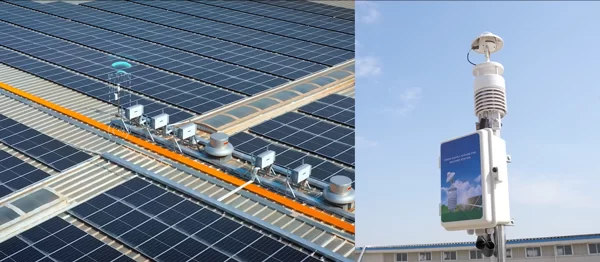Solar Panels for Weather Stations: Powering Your Weather Monitoring Device
Introduction to Solar Panels for Weather Stations
Accurate weather tracking is very important in daily life. It helps with outdoor planning and predicting climate changes. To keep weather tracking devices working well and all the time, solar power is becoming more popular.
This article looks at the benefits and functions of solar panels for weather stations. It shows how they effectively power your weather tracker.
How Weather Station Solar Panels Work
Solar panels at the weather station collect sunlight. They turn it into electricity that we can use. These panels are made of solar cells. These cells are made from materials that can carry electricity.
They make electrons move when sunlight shines on them. To get the right voltage and current, the cells are connected both in series and in parallel. This creates a solar array.
When sunlight hits the panel, it activates electrons in the semiconductor. This makes the electrons move in a certain direction. This movement makes direct current (DC) electricity in the panel.
To connect this electricity with weather station systems, an inverter changes DC into alternating current (AC). This makes sure they work together.
Advantages of Solar Panels for Weather Trackers
Sustainability and Environmental Benefits
Solar panels at weather stations support sustainability. They use clean and renewable energy. These systems use the sun’s power. This helps reduce carbon emissions and lessens our reliance on fossil fuels.
This eco-friendly solution helps devices run better. It also lowers the environmental impact of traditional energy sources.
Cost-Effectiveness
Once installed, solar panels lower operational costs a lot because sunlight is free. Solar panels need very little maintenance. Unlike batteries, they do not need to be changed often. Over time, this makes them a cost-efficient alternative, conserving both money and resources.
Remote Operation Potential
Weather tracking often happens in remote areas where there may not be any power sources. Solar-powered weather stations can work on their own without needing the power grid.
This makes them great for remote areas. These systems can also have energy storage options, like batteries. This makes sure they function well in bad weather or at night.
Key Things to Think About When Choosing Solar Panels for Weather Stations
Power Output
The efficiency of solar panels at weather stations relies on how much power they produce. This output shows how much electricity they can generate.
To assess your weather tracker’s energy needs, choose panels with the right wattage to meet those needs. Knowing how much power your system uses helps you pick the right number and size of panels. This ensures a steady energy supply.
Efficiency and Performance
Efficiency shows how well a solar panel turns sunlight into electricity. Higher percentages mean better performance. Choosing high-efficiency panels helps you produce more energy.
This is especially true in places with less sunlight. Choosing the right panels helps your weather tracking system produce the most power over time.
Durability and Resistance to Harsh Conditions
Weather stations work in different weather conditions. They can deal with very hot and very cold weather. They also handle rain, snow, and strong winds. It’s important to pick strong panels that can handle these challenges well.
Pick solar panels that have weather-resistant coatings, sturdy frames, and strong protection from damage for long-lasting use.
Installation Adaptability
Check the space you have and the installation options when picking solar panels for your weather station. Some panels can connect directly to the station. Others might need different ways to be mounted.
Ensure your selected panels fit your setup’s requirements. They should fit well in the right place for the best results.
Enhancing Efficiency: Advice for Solar Panel Use on Weather Stations
Best Panel Positioning
To get the most solar energy, place the panels where they get direct sunlight. Check that no buildings or plants are close enough to block the light. Always look around you. Make sure there are no objects blocking the panels from getting sunlight during the day.
Regular Maintenance
Routine maintenance is important for solar panels at weather stations. It helps them work well. Clean the panels often to get rid of dust, debris, and bird droppings.
These can block sunlight. Check the wiring connections regularly for any damage or looseness.
Taking care of maintenance helps keep energy production high and makes the panels last longer.
Conclusion:
Solar panels for weather stations provide a good and green way to power trackers. Using sunlight to create electricity has many benefits.
It causes less harm to the environment. It also helps save money. Additionally, it can be used in remote areas.
When choosing solar panels for weather tracking systems, consider some key features.
These features include energy output, efficiency, durability, and ease of installation. Following guidelines for placing and caring for panels will help them work better and last longer.
Hunan Coda Electronic Tech Co., Ltd is a top maker of sensor solutions. It is known around the world for its great OEM sensor products.
Hunan Coda is famous for its great product design. The company is dedicated to industry standards. It is known in the market as a trusted provider of advanced environmental monitoring technology.
The company uses advanced technologies to create new solutions. These solutions provide better safety, improved performance, and a great user experience for sensor systems.
